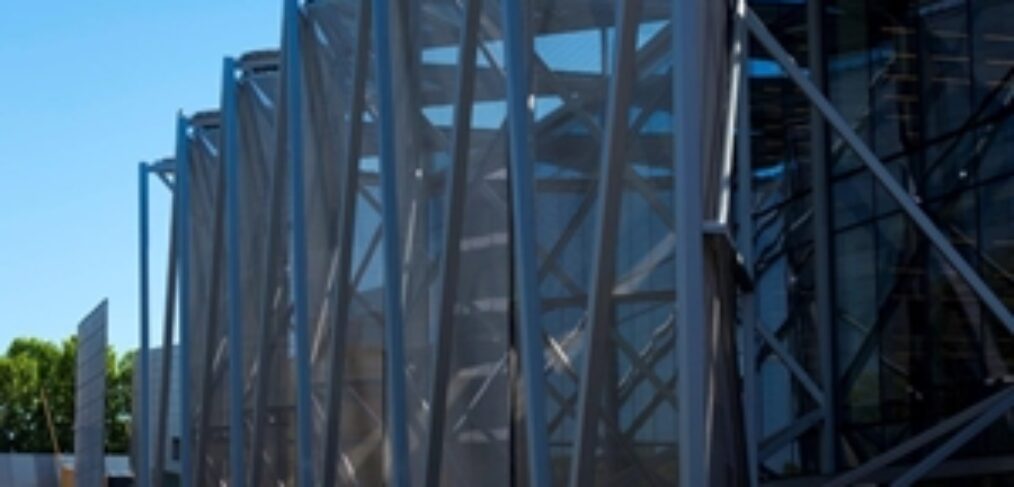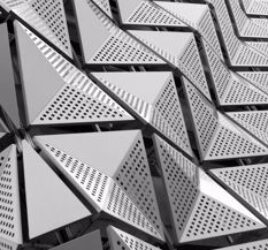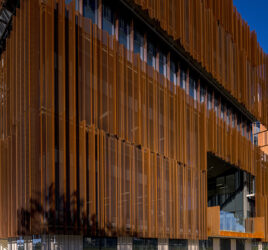
Different types of wire mesh and their applications
Architectural mesh is valuable both in terms of the many aesthetic opportunities it provides and its practical benefits, like privacy, protection, temperature regulation and more.
The many different types of wire mesh – sometimes called wire cloth in certain applications – can protect visitors, employees and residents from direct exposure to sunlight, as well as create an eye-catching visual that makes a facility that much easier to find. Mesh can also serve capably in a variety of roles within a structure, defining distinct areas of a building and screening off more private places from open work floors.
While metal mesh patterns are often seen as a purely stylistic choice, there are some practical considerations to keep in mind when selecting them. A careful choice will mean you have put the best possible metal mesh in place, whether for industrial or architectural purposes. Let’s look at what distinguishes the different types of wire mesh products and what makes them useful.
 A more open mesh pattern can provide increased visibility and allow for free air circulation.
A more open mesh pattern can provide increased visibility and allow for free air circulation.Different types of wire mesh patterns
1. Open mesh patterns
An open pattern provides plenty of airflow and access to light while still serving as a physical barrier, whether attached to a balustrade, filling a role as wire fencing or a security screen or dividing parts of an interior space. A degree of visibility is often useful to give customers a preview of what’s to come or simply to allow workers to avoid turning a corner or moving through an entryway blindly.
A more open mesh can also serve as a sunscreen in certain areas, such as the first floor of a building in a developed downtown or central business district. Depending on the direction a building faces, how much direct sun exposure it receives each day and the desired temperature and lighting, open patterns can still prove useful as sunscreens.
One area where care should be taken with these patterns is their role as privacy screens. Standing alone, they still offer a degree of visibility. However, they can be paired with other elements, such as glass panels, if the primary objective is to prevent the spread of sound.
2. Closed mesh patterns
Patterns that keep more of the metal in place, which can be achieved with expanded metal mesh among other options, emphasise discretion. Whether your facility has to meet privacy guidelines or requirements – as is typical for medical facilities, preschools and child care centres – or you simply want to create a more distinct division between spaces, a less open pattern can help you achieve this goal.
Limiting the amount of sunlight that passes through metal mesh is vital in some instances. If the material plays a key role in regulating temperature, the orientation of the surface it covers and the average exposure to sunlight can mean reducing the amount of visible light that streams through. Getting the correct placement and choice of material is in everyone’s best interest.
Metal mesh can also be used to screen off part or all of offices, hallways, conference rooms and other areas where a sense of openness and an expectation of privacy need to be balanced.
Security fencing is another application where a less open pattern can offer the right mix of benefits. Separating a thoroughfare or main street from an employee break area or space intended only for residents of a building means offering a sense of separation and security for those inside.
3. Metal mesh curtains
More flexible than fixed installations of metal mesh, curtains can include a unique functionality depending on how they’re installed: movement. By placing metal mesh curtains on a sliding track, it’s easy to divide spaces when necessary. Whether you’re creating a sense of privacy while still allowing airflow in a retail business or separating different teams in an office space, there are many applications where metal mesh curtains can capably fill an important role.
Curtains can also be installed in a fixed position, serving as a permanent barrier that still allows light to pass through and air to circulate. Potential applications include the sides of open stairwells, where mesh can fill a safety requirement as well as an aesthetic purpose, and in front of exterior windows, where metal mesh curtains can serve as sunscreens.
How is metal mesh made?
Metal mesh is chiefly produced in one of two ways: either combining metal wires together in a way that creates a stable, dependable final product of woven metal mesh, or through welding individual strands together to create welded wire mesh. The strands themselves are often produced by using metalworking processes that reduce larger pieces of larger diameter into flexible yet strong wire. Aluminium and stainless steel wire mesh are common choices, in part due to their corrosion resistance. But they’re not the only substrate options available. Warp and weft wires cross over in repeatable patterns similar to those used in making cloth, whether in a plain weave or more exotic design.
Finding a dependable partner to provide different types of metal mesh
With so many different types of metal mesh and patterns available, finding the best fit for your project doesn’t have to be a complicated or drawn out exercise. When you partner with a dependable and experienced provider of metal mesh, you can count on knowledgeable support throughout the process.
Locker has more than 60 years of experience providing an extensive product range to clients in the architectural and industrial fields, along with supporting customers involved in mines and quarries. To learn how we can support your metal mesh needs, get in touch with us today.



